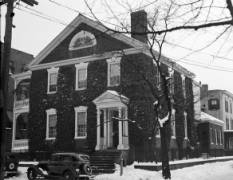What makes a Building Historic in Virginia?

We often read that Virginia is one of the richest states in historic buildings of the US. But what exactly is an historic building? Intuitively, we think of something very old. However, age is not sufficient, as there are some few other requirements to fulfill. Luckily, Virginia Law helps owners to give an answer to this question. With the institution of Virginia Landmarks Register and the National Register of Historic Places in 1966, the state of Virginia has created two practical and useful instruments to determine if a property may be considered as historic.
Buildings are eligible for the registration when their architectural integrity is fully preserved, and they have historical background or importance. It is not necessary that buildings are associated with famous historical events or people, as most registered properties have only local significance. The presence of some architectonic themes or styles that are significant for local history has been sufficient to grant the registration in many cases. Aluminum and vinyl-sided buildings are eligible as well, though they are not recommended treatments for historic properties.
Does it changes something once that your property has been registered as historic? You get the right to expose plaques that mark the historical significance of your building. You are not obliged to open your property to the public, and this does not affect its value. However, it is possible to join several financial incentive programs. In some cases, limitations on building alterations are set.
Historic sites are not protected against undesired development projects of the government. The only way to get your property legally protected is to join the Historic Preservation Virginia Easement Program that was purposely designed to grant owners a kind of legal protection without imposing any obligation like opening the property to the public or giving up use or enjoyment of it.
Today, the registers include about 3000 properties which can be listed individually or just because they belong to a historic district. Norfolk has five historic districts, and Chesapeake another five.
The evaluation process is articulated in two stages, lasts about 3 months, and is totally free. First, a special committee of the Department of Historic Resources (DHR)’s Review Board reviews the building on the base of the information submitted in a preliminary Information Form (PIF) and makes a preliminary evaluation. A recommendation is then issued by the DHR’s internal evaluation team. On step two, if a building has been regarded as eligible for the registers, it is officially nominated. It is necessary to fill a nomination form and provide further detailed documentation.
The definitive decision is rather selective, and the registration has honorific nature. Considering the complexity of the matter, most owners prefer to hire a consultant for the nomination.
If your property is listed as a historic building and is placed inside an historic local district, this can affect renovations considerably. Each city has committees that review your renovation plan. For further information, please read our post on historic local district What Are Historic Districts?.
Photo credit: Norfolk Public Library info about Taylor-Whittle House
